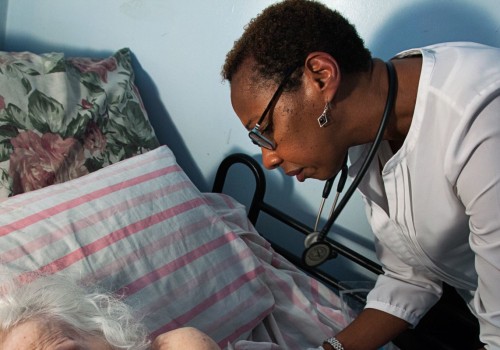To begin hospice care, patients must meet the hospice eligibility requirements set by the U.S. 26% Medicare Centers for Medicaid Services. While a specific number of symptoms are not required to qualify for hospice, these guidelines can help determine whether a patient's condition is, or will soon be, appropriate for hospice care. There are also specific hospice eligibility criteria that must be considered based on the patient's primary diagnosis.
Choosing from the list of diseases below will allow you to read the applicable requirements for hospice care. There are two main requirements for hospice. First, at least two doctors must certify that a patient has a terminal illness and that his life expectancy is less than six months if his illness runs its normal course. Does your patient need palliative or palliative care? Patients are eligible for hospice care when a physician clinically determines that life expectancy is six months or less if the terminal illness runs its normal course.
In palliative care, a person does not have to give up treatment that could cure a serious illness.
palliative care
can be provided along with curative treatment and may begin at the time of diagnosis. Over time, if your doctor or palliative care team thinks ongoing treatment no longer helps, there are two possibilities. Palliative care could become palliative care if the doctor thinks the person is likely to die within six months (see What does the six-month hospice requirement mean?).Or, the palliative care team could continue to help with a greater emphasis on comfort care. Like palliative care, hospice provides comprehensive comfort care as well as support for the family, but, in hospice, attempts to cure the person's illness stop. Hospice care brings together a team of people with special abilities, including nurses, doctors, social workers, spiritual counselors, and trained volunteers. This is important, as numerous studies have shown that hospice reduces end-of-life costs, as well as decreases length of stay and intensive care utilization, while increasing the quality and satisfaction of care received.
When a patient has been diagnosed with a life-limiting condition, they usually qualify for hospice when they have less than six months to live. Of the 7 patients referred to hospice by a doctor, 5 were enrolled in hospice (the 2 who did not, cited financial reasons), while only 1 of the 4 patients referred by a social worker enrolled in hospice. The hospice team trains family members on how to care for the dying person and even provides respite care when caregivers need a break. He reviewed all physician and social work notes from penultimate and terminal admissions, and recorded the primary and secondary diagnoses of both admissions, hospice enrollment at the time of either admission, evidence of a hospice discussion, the occurrence of a palliative care consultation during any of the admissions, number of subspecialist referrals during the penultimate admission, length of stay and total hospital costs for each admission.
However, because it was rare for patients to receive a referral to palliative care or a referral to hospice, it is likely that such conversations were rare. Most hospice care is centered at home; however, there may be times when you need to be temporarily admitted to a hospital, long-term care facility, or inpatient palliative care facility. Medicare allows and reimburses a one-time visit from a doctor who is a medical director or employee of a hospice agency. After talking with her husband, Dolores changed her mind about the use of palliative care and left to start dialysis, hoping that one day she would have her first great-grandchild.
Temporary care is usually provided in the hospice center or in beds reserved in nursing homes or hospitals. Communication of hospice prognosis and eligibility would have been appropriate for most patients in this study. In more than 25 years of Medicare hospice benefits, the average length of hospice stay has been approximately 20-22 days. .
.












